With so many of the world’s corporates searching for cheaper and cheaper labour, outsourcing has become a way of life. The uncertainty that comes with not knowing how long you can stay competitive is something that has seeped into most aspects of our lives. There’s only so much you can cut before there’s nothing left to cut. I know. Up the road from me, a couple of Polish girls who have been turning out delicious sandwiches for three years and even more delectable cakes are throwing in the flour and shutting shop. They’re not making any money, in spite of the hours they’re putting in.
Years ago, in a previous life, I remember contracts being negotiated that left very little by way of margin for my Indian colleagues. I wondered then how they were making ends meet. And I wonder now.
I was hijacked in Agra. Nothing new there. Whether it’s a private car hire or an auto-rickshaw, if you’re not behind the wheel you are at the mercy of whoever is. Having witnessed the splendour of the Taj Mahal and hearing how the craftsmen from Kabul had taken 21 years to decorate the marble walls in slivers of precious stones, I simply had to see how it was done. Or so I was told.
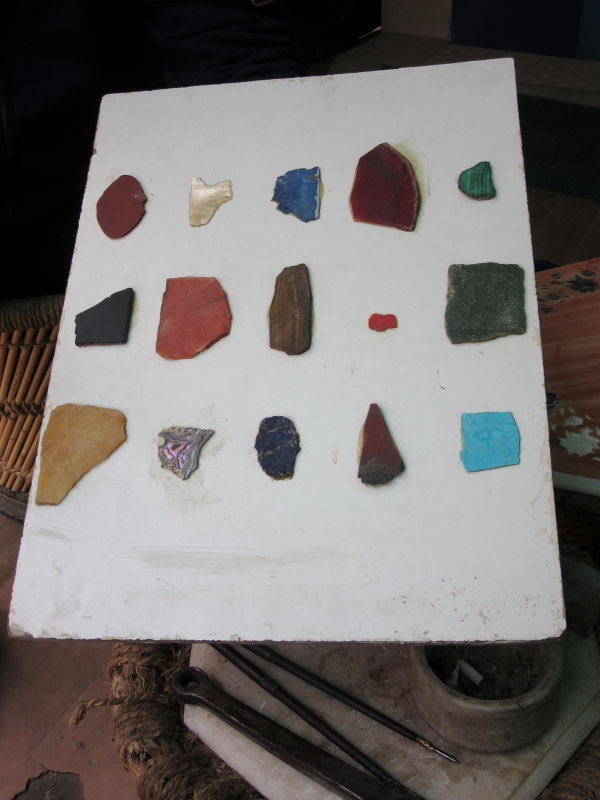
After the obligatory tea, I got a short introduction to the history of the Agra marble factory – it’s been in the family for generations and uses the same traditions that were used to build the Taj Mahal. Then I got a short introduction to the various stones used in the Taj and where they come from. The onyx from Belgium threw me a little but hey – what I know about stones, precious or otherwise wouldn’t fill the tip of a chisel. Then I had a crash course on how it’s all done. I may be missing a few steps but bear with me.
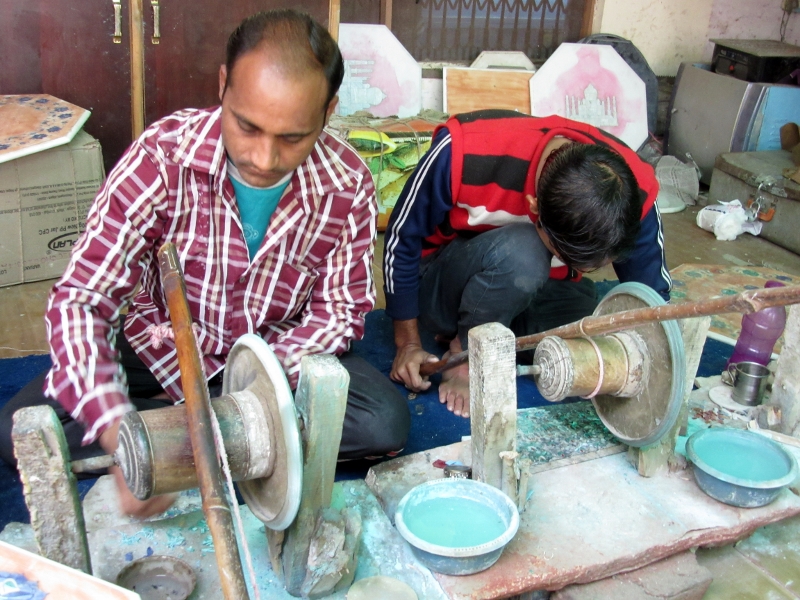
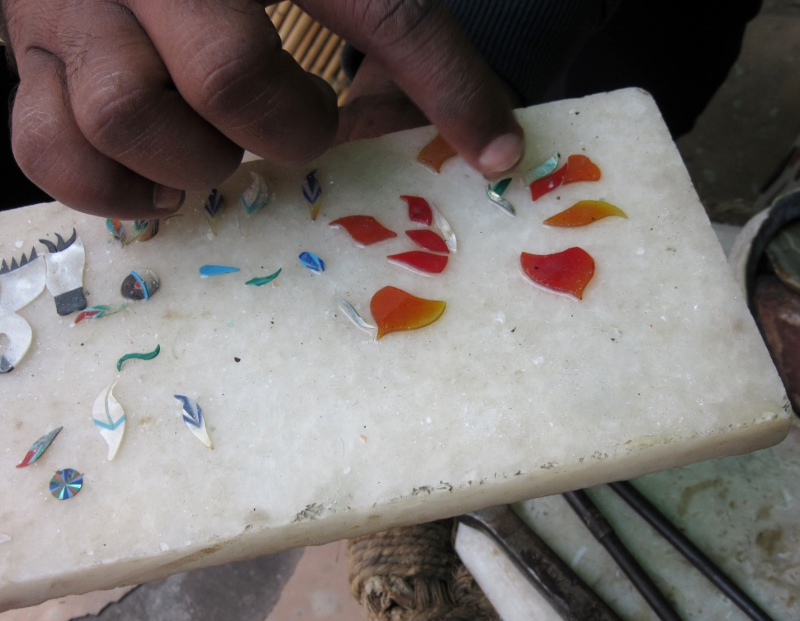
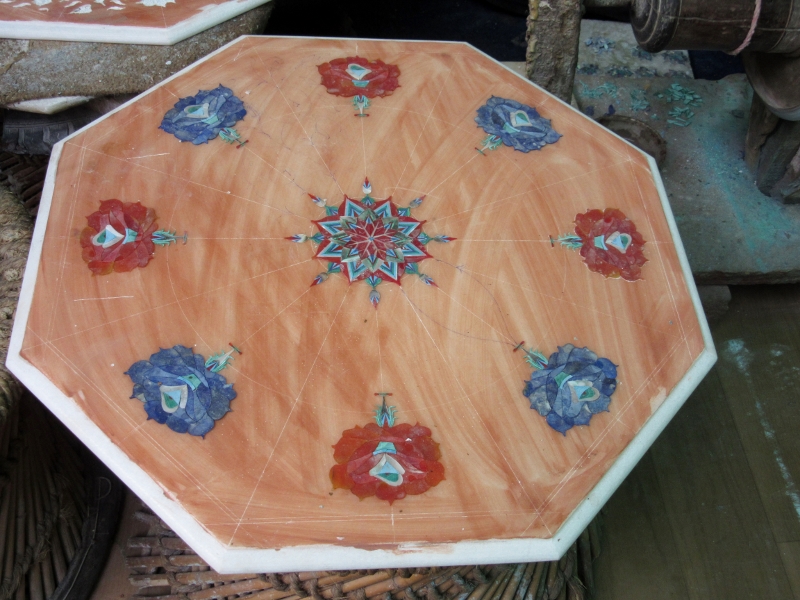
The stones are cut into tiny slivers using machines that look like they came out of the dark ages. The finished pieces are sold according to how many individual pieces of stone it took to make the design so this bit is important. The white marble is then washed so that sweat stains don’t mark it. The pattern is set and then pressed so that the outline is left on the stone. Then the master craftsman takes over. He gets to carve the pattern 2mm into the stone. Apparently he can work for about 30 minutes before needing to break for 90. The work is very fiddly and I would imagine there’s blood, although I saw no evidence of this – it’s just my imagination. Each individual piece is then glued into place using a glue made from tree gum, rice water, honey and a secret ingredient. The whole process takes days, weeks, months, depending on the size of the piece. How can this make economic sense?
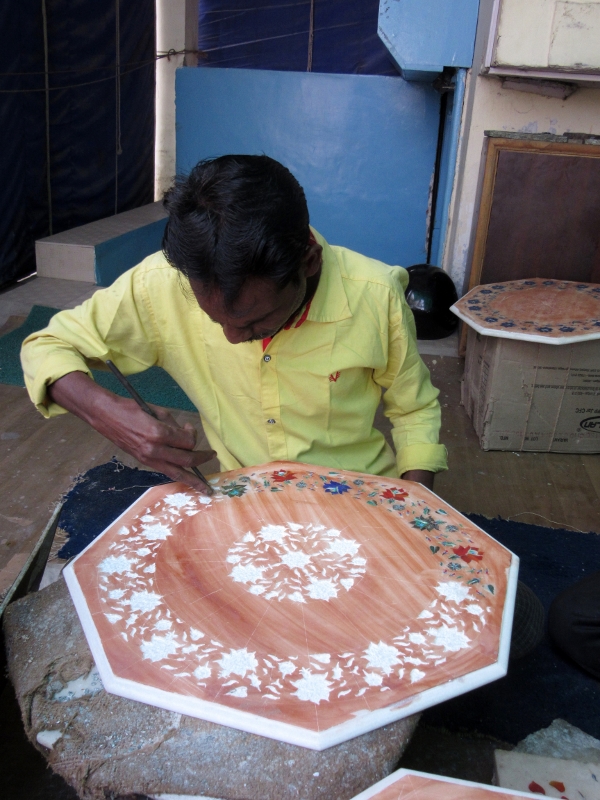
With the basics in hand, I was then taken inside to the Agra marble showrooms. Aladdin’s cave comes to mind. Of course, by now I know that it will be anything but cheap. The stage has been set. The man hours noted. And regardless of what the boys are being paid, each piece takes an age to put together.
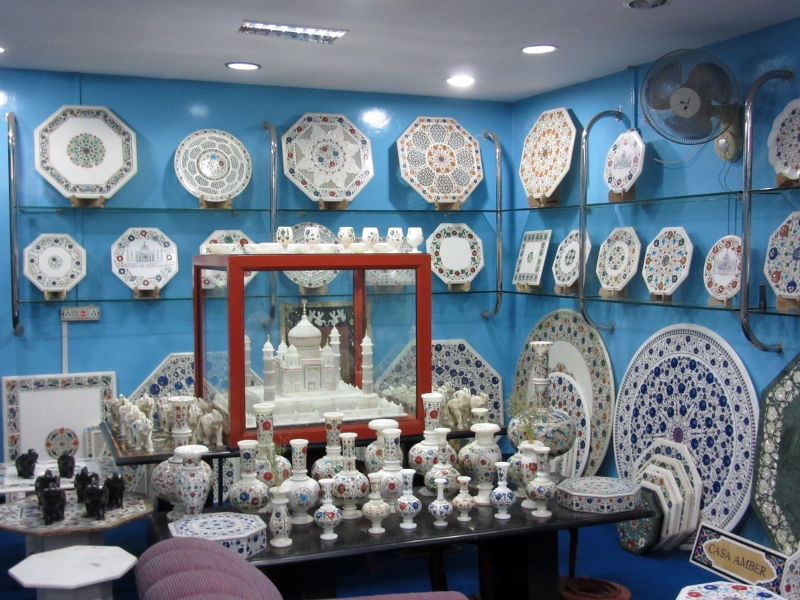
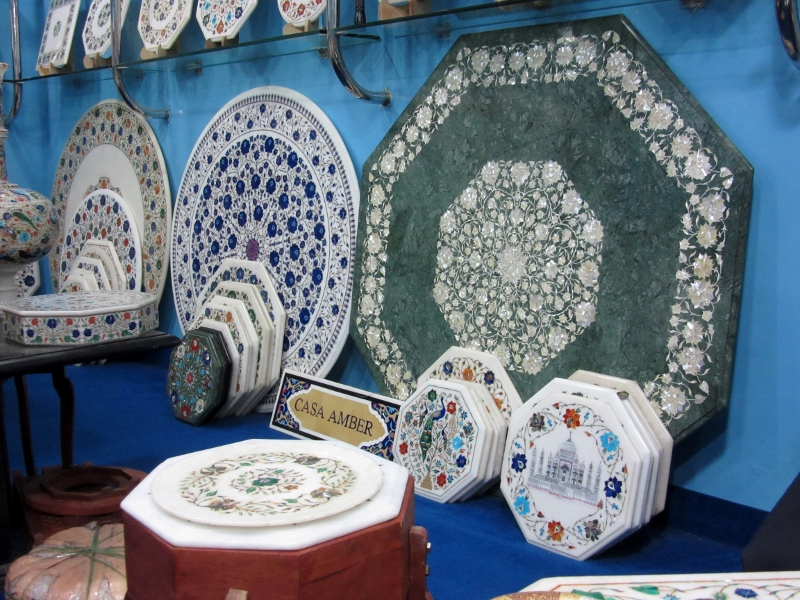
I sat and oohed and aahed all the while repeating that I had no money. And no, I had no credit on my credit card, either. I converted my Hungarian wage to rupees and I could see that he wasn’t impressed. I held strong … for about an hour. And then I saw the piece I’d love had I the money (the hexagonal green marble table inlaid with mother of pearl) – a stunning number that had 8950 individual pieces and could be mine for just €8000. Door to door. But even at that price, I couldn’t make the sums add up. The workers must be working for pittance.
The more I saw, the more I liked and the more I appreciated the work that went into it all. All hand done. Laboured over. Painstakingly worked. And I caved. I bought a piece he said I could use as a chopping board – just like his mother did. Yeah right.
I’m torn though. Yes, it is worth every cent I paid but what are they being paid to produce it? Is it just one man getting rich through it all? It’s hard to know. Should I not have bought? But then no customers mean no work at all and is some work better than nothing? The angst.
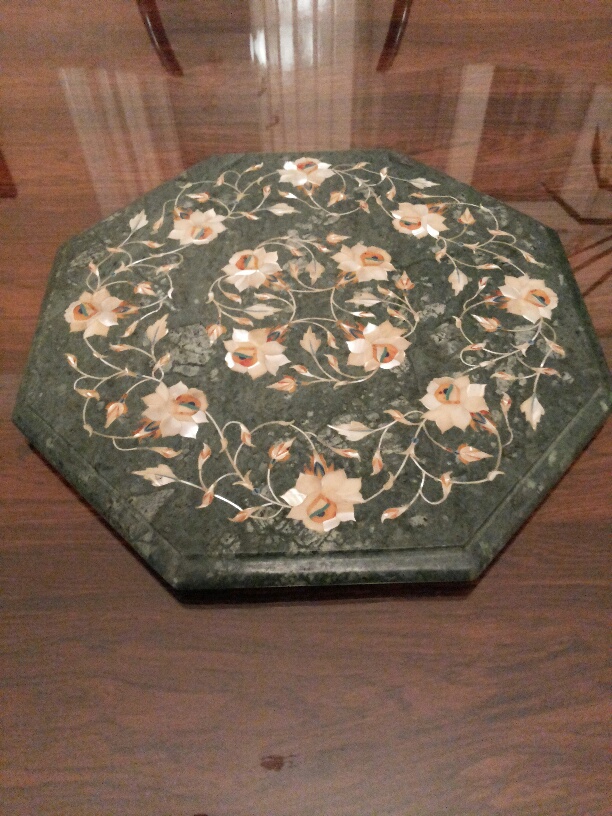
And while the moral arguments gave me a headache, I am grateful that I got to see it all, how it was done. I’m grateful that I’ve not yet been deadened by the false economy of mass production. I’m grateful that I have it in me to appreciate a job well done. And I’m particularly grateful to Emirates for their generous baggage allowance. Without them, it would still be just a photograph.
I also got a sneak preview of how the Taj Mahal changes in the various light of day… stunning.
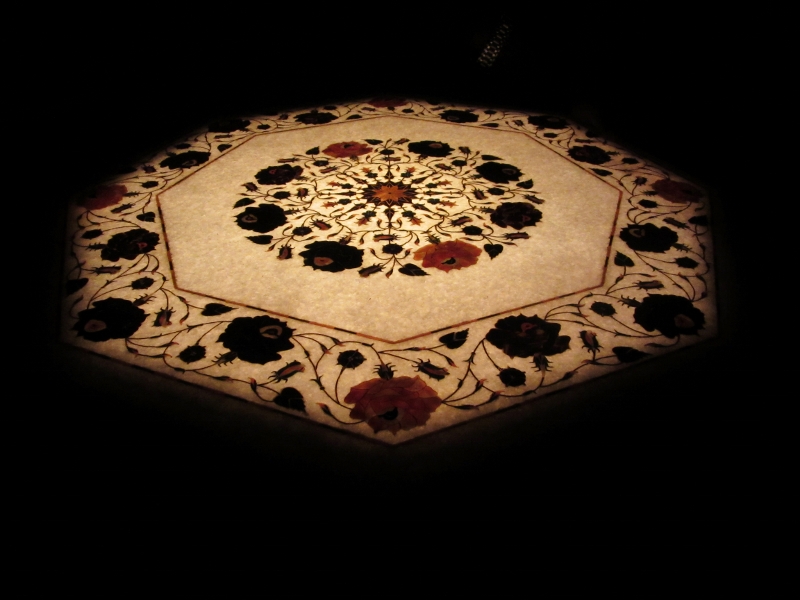
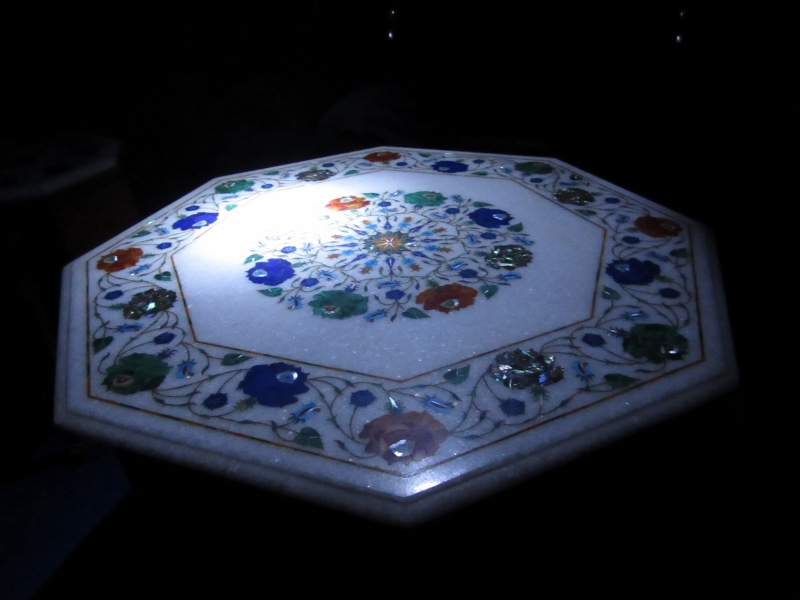
Share this:
- Click to share on X (Opens in new window) X
- Click to share on Facebook (Opens in new window) Facebook
- Click to share on Pinterest (Opens in new window) Pinterest
- Click to share on LinkedIn (Opens in new window) LinkedIn
- Click to share on Reddit (Opens in new window) Reddit
- Click to share on WhatsApp (Opens in new window) WhatsApp
- Click to share on Pocket (Opens in new window) Pocket
- Click to share on Telegram (Opens in new window) Telegram
- Click to email a link to a friend (Opens in new window) Email







7 responses
Thank you for sharing all that you have of your visit to India.
How apt your use of the word ‘hijacked’. I remember that for what I learned and saw, as well as the feeling that we couldn’t leave until we each had bought something. I am glad you brought a piece back. Is the green one yours? Re: Belgian stones — The original Taj Mahal inlays had semi-precious stones from distant places. It works for me. See http://www.agraindia.org.uk/taj-mahal/architecture/building-materials-used.html
Yep – green one is mine… with sights on the large hexagonal table…
Glad you had a super time – though I was disappointed in my hopes for your description of the ancient charms of Muddipore . . .
It looks like you brought back a good piece………..as for the cost I think I would reverse the problem………the Indian workers can clearly live on what they are paid (small amount though it is) otherwise they wouldn’t be there, surely the question is why do we, in the west, need so much. I remember discussing this with an Indian and his reaction was not how could an indian do so much with so little but how could a westerner do so little with so much.
For me the sad bit is that these skilled men do not get the chance to be creative they spend their days putting together jigsaw puzzles that somebody else has designed and they reproduce that design over and over again………how soul destroying.
I have loved your Indian blogs…….thank you………I think India is a facinating place, its culture, its people and both the towns/cities and countryside. Whilst I have to wish the country the best whilst it modernises its’ economy, there is another big part of me that doesn’t want it to change at all.
Will quote you on that – have quoted you on that 🙂